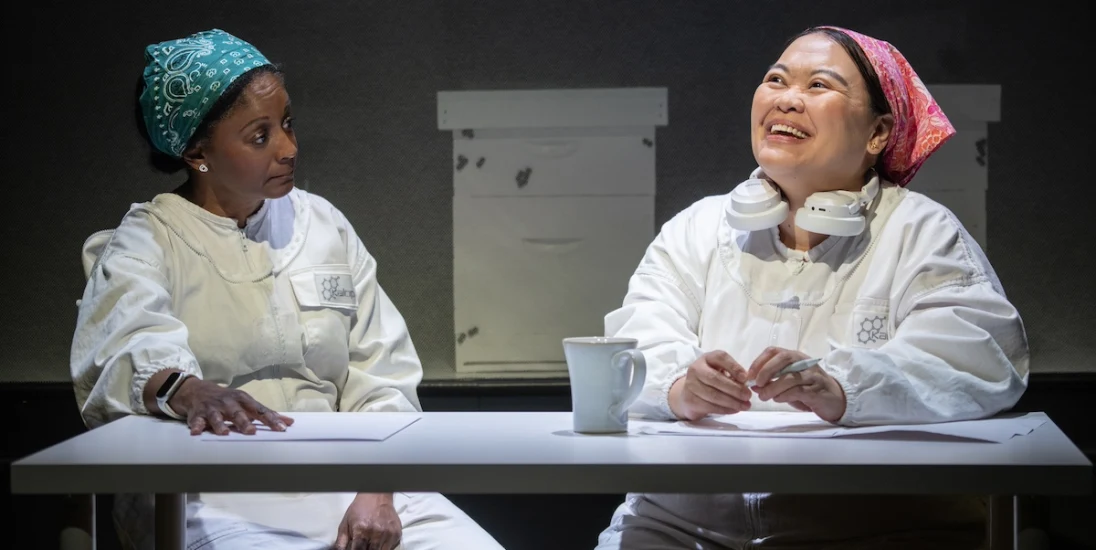'The Apiary' review — imagining a world without honeybees
Read our four-star review of The Apiary off Broadway, a world-premiere play debuting as part of Second Stage Theater’s inaugural Next Stage Festival.
Imagine a future where robots and space travel are ordinary, but almond milk and avocado toast are things of the past thanks to the vanishing of honeybees. The Apiary, by Kate Douglas, is set 22 years from now and follows a team of lab assistants at a synthetic apiary working to slow the rapid decline of the bee population.
In addition to climate change and habitat loss, The Apiary posits another theory for the looming extinction: the lost art of communication between humans and bees. The play begins with a woman (played by Nimene Wureh) speaking to a support group about an old wives' tale: “If you don’t tell the bees about important events in your life, the bees will die and lay a curse on the whole family,” she warns.
The synthetic lab is abuzz with drama. A quarterly budget meeting is about to take place and a new employee, a biochemist named Zora (April Matthis), has arrived for her first day. The lab supervisor, Gwen (Taylor Schilling of Orange Is the New Black), was unaware the position had even been filled.
But like a good hive, the lab has defined roles. Gwen is the queen bee, and Zora and Pilar (Carmen M. Herlihy) are the worker bees. Gwen is gunning for a promotion, Zora is passionate about helping the bees, and Pilar just wants to save up for a snowmobile tour of Iceland’s glaciers.
Zora’s knowledge of scientific journals on the conservation of bees inspires the scrappy, underfunded lab to begin experimenting with new hypotheses, like filling the lab with artificial flowers to promote pollination. But after a former worker is found dead in the lab, a new hypothesis is set into motion. It requires confidential volunteers and hush-hush waivers.
The play buzzes between a dark comedy and a poetic contemplation on death, skillfully balanced by director Kate Whoriskey. As a transition between scenes, dancer Stephanie Crousillat, wearing a gas mask like a bee’s tubular mouthpart, expressively moves throughout the lab.
Perhaps Warren Adams’s choreography is a literal representation of a honeybee’s “waggle dance,” which bees perform to communicate the location of a food source to their colony. Christopher Darbassie’s soundscape is a low hum of buzzing that adds energy to the performance. The set, designed by Walt Spangler, is also literal, with a mesh covering shaped like the hood veil of a beekeeper suit and a glass encasement that serves as a graveyard for the dead bees.
But for a play teeming with death, the performances bring lightness. Wureh masterfully plays four characters, including support group attendees and lab volunteers, all with different accents. Herlihy plays Pilar as a pillar of hope, and her cheerfulness brings laughs.
Even Matthis, as the scientific-minded Zora, displays some dry humor. And Schilling wryly delivers a line about wanting to avoid jail, which scored the biggest laugh as a perfect callback to the performer’s hit TV show.
The 75-minute play is quirky and dark and will leave you feeling appreciative for life and honey. Go tell it to the bees.
Photo credit: April Matthis and Carmen M. Herlihy in The Apiary. (Photo by Joan Marcus)
Originally published on
